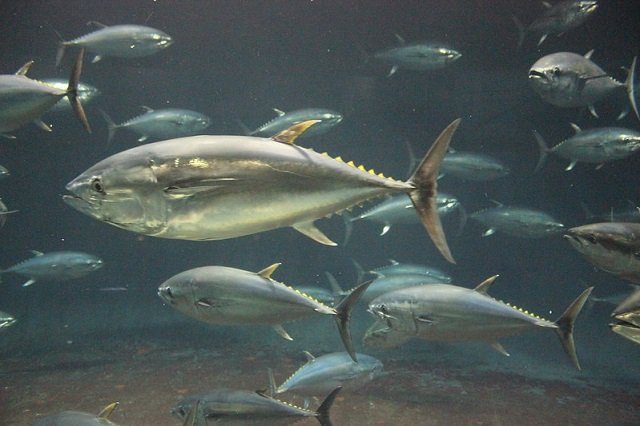
The European sea bream is a highly valued fish, but its aquaculture industry faces challenges due to the presence of skeletal anomalies in farmed fish. These anomalies not only affect the appearance, potentially influencing consumer perception, but also raise concerns about fish health and welfare.
Current aquaculture practices often prioritize increasing production quantity over fish quality. However, this approach can exacerbate the issue of skeletal anomalies. To address this problem, researchers have been exploring the impact of rearing conditions on skeletal development.
A team of scientists from the University of Rome ‘Tor Vergata’, Indiana University School of Medicine, Associazione Piscicoltori Italiani, and the University of Las Palmas de Gran Canaria conducted a study to determine the effects on skeletal phenotype of two fundamental factors: density and water volume, in gilt-head bream (Sparus aurata) larvae, from eggs to 60 days after hatching. The research builds upon previous findings with model fish and older life stages of gilt-head bream.
The problem: Skeletal anomalies
Deformities not only diminish aesthetic appeal but can also negatively affect fish health and welfare. The main effects of skeletal anomalies include:
- Reduction in consumer appeal: Skeletal anomalies make farmed gilt-head bream appear less desirable to consumers, affecting market demand.
- Negative impact on fish welfare: Deformities can affect essential functions such as feeding and increase susceptibility to parasites, compromising fish health.
Current solutions and limitations
Extensive research has explored various approaches to reduce skeletal anomalies in fish, particularly in gilt-head bream, including:
- Genetic selection: While promising, this method requires long-term investment and raises ethical concerns.
- Nutritional optimization: Tailoring diets to specific needs is beneficial but can be complex and costly.
- Improved rearing practices: Techniques such as the use of foam fractionators to maintain water quality help but have not fully addressed the problem.
A new approach: Population density and water volume impact
To address the complexity of skeletal anomalies, some researchers have explored “ecological approaches” focusing on rearing conditions:
- Semi-intensive strategies using larger tanks with higher water volumes and lower fish densities have shown promise in reducing skeletal anomalies in various fish species.
- Recent studies in model fish such as zebrafish and medaka suggest that lower densities consistently lead to improved skeletal development and reduced anomalies.
While these methods have yielded results, the issue of skeletal anomalies persists. This is partly due to the complex nature of the problem:
- Different factors may cause the same anomaly in different species.
- Environmental factors may have both positive and negative impacts on anomaly development, depending on the species and life stage.
However, implementing these findings in commercial settings has limitations: larger tanks are more expensive and require adjustments to existing infrastructure.
Stay Always Informed
Join our communities to instantly receive the most important news, reports, and analysis from the aquaculture industry.
Study objective
This study aims to confirm these findings in gilt-head bream during the larval stage, using realistic tank sizes and population densities relevant to real aquaculture practices.
The researchers conducted the following activities:
- They used a single batch of 615,385 eggs.
- Larvae were reared in two water volumes (500 L and 1000 L) at three different densities:
Low density (LD): 25 larvae/L
Medium density (MD): 125 larvae/L
High density (HD): 250 larvae/L
- Larvae were monitored for 60 days after hatching (dph).
- Morphometric, anatomical, and histological data were collected to assess development and skeletal anomalies.
The chosen densities and volumes are directly relevant to real-world aquaculture practices, ensuring that the findings have practical applications.
Results
- Larvae raised at low density (LD) were significantly longer and heavier than those raised at high density (HD).
- Rearing with LD also led to a significant decrease in the number of individuals with anomalies in the jaw, vertebral body shape, and vertebral arch compared to medium and high-density groups.
Potential benefits
The findings align with previous research on model fish and older stages of gilt-head bream, suggesting that lower population densities can significantly improve skeletal development and reduce anomaly occurrence.
Reduced prevalence of skeletal anomalies in farmed gilt-head bream, leading to:
- Better fish health and welfare
- Increased consumer confidence and market acceptance
- Greater profitability for farmers through waste reduction and improved marketability
Conclusion
By understanding the interaction between density, water volume, and skeletal development, researchers can contribute to the development of improved rearing practices for the European gilt-head bream industry.
This study contributes to the ongoing effort to find sustainable solutions for the European gilt-head bream aquaculture industry. By prioritizing fish quality alongside production efficiency, this research paves the way for a more sustainable and responsible aquaculture sector in the future.
The study has been funded by the European Union’s Horizon 2020 program.
Contact
Zachary Dellacqua
PhD Program in Evoutionary Biology and Ecology, University of Rome ‘Tor Vergata’, Rome 00133, Italy.
Email: dellacquaz95@gmail.com
Reference (open access)
Dellacqua, Z., Di Biagio, C., Martini, A., Mattei, F., Rakaj, A., Williams, J. C. Jr., Fabris, A., Izquierdo, M., & Boglione, C. (2024). Skeletal anomalies in gilthead seabream (Sparus aurata) larvae reared in different densities and water volumes. Journal of the World Aquaculture Society, e13056. https://doi.org/10.1111/jwas.13056
Editor at the digital magazine AquaHoy. He holds a degree in Aquaculture Biology from the National University of Santa (UNS) and a Master’s degree in Science and Innovation Management from the Polytechnic University of Valencia, with postgraduate diplomas in Business Innovation and Innovation Management. He possesses extensive experience in the aquaculture and fisheries sector, having led the Fisheries Innovation Unit of the National Program for Innovation in Fisheries and Aquaculture (PNIPA). He has served as a senior consultant in technology watch, an innovation project formulator and advisor, and a lecturer at UNS. He is a member of the Peruvian College of Biologists and was recognized by the World Aquaculture Society (WAS) in 2016 for his contribution to aquaculture.




